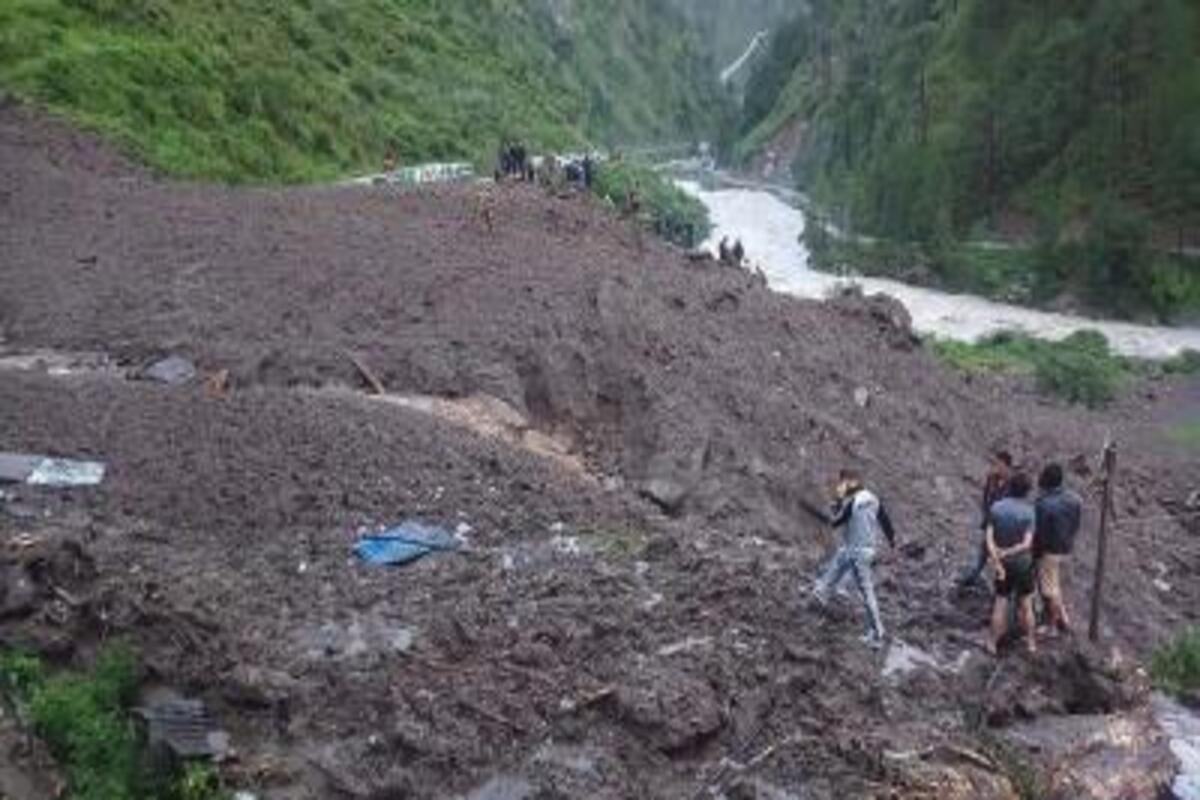Play all audios:
Despite repeated scientific warnings about the fragile geology and increasing disaster vulnerability of the Teesta river basin, north Sikkim is once again in crisis. A devastating cloudburst
over the weekend has triggered a series of massive landslides, cutting off large swathes of the region, stranding more than 1,500 tourists, and claiming the lives of at least three soldiers
after a landslide hit an army camp in Chatten. This catastrophe follows years of expert alerts. In a landmark study published in Landslides (Springer Nature), noted geographer and landslide
specialist Dr Biswajit Bera from Sidho-Kanho-Birsha University warned of the rising frequency and magnitude of landslides in the Sikkim Himalayas. His team’s long-term research, dating back
to 1999, pointed to the compounding effects of climate-induced extreme weather events, glacial lake outburst floods (GLOFs), and rampant development on fragile rock formations—many of which
have been dangerously overlooked by planners and authorities. Advertisement “This region is tectonically hyperactive and structurally weak. Most infrastructure development, including roads
and dams, is being carried out without properly considering slope stability and lithological fragility,” Dr Bera emphasised in the study. “The consequences are now visible, and tragically
recurring.” Advertisement The latest landslides have isolated key tourist destinations like Lachung, Lachen, Chungthang, and Mangan. Continuous rainfall over several days has not only
blocked roads but also disrupted power and water supply in many areas, including a worsening water crisis in Chungthang. With weather slightly improving on Monday, joint rescue operations by
the Indian Army, National Disaster Response Force (NDRF), and local administration began evacuating stranded tourists. Over 100 people have been rescued from Lachung so far, assisted by
members of the Lachung Hotel Association and the Lachungpa community, who helped carry luggage and provide relief. However, evacuation from Lachen remains stalled due to precarious
conditions and recurring slides. Administrative officials warn that reaching Lachen could take significantly more time and planning. Dr Bera’s research highlights how north Sikkim’s
terrain—composed of high-grade metamorphic rocks such as phyllite, mica schist, and biotite gneiss—is particularly prone to landslides, especially during intense rainfall events. The
region’s major road lifeline, NH-10, much of which was destabilised after the 2023 South Lhonak glacial lake outburst, continues to remain vulnerable due to its close proximity to the
swelling Teesta river. Most recent landslides, including those in Chungthang, Lachen, and Mangan, are concentrated in areas where lineament density is high—zones already identified as
critically unstable in geological studies. Despite these findings, infrastructural projects, including multiple hydropower dams, continue unabated. The Central Water Commission (CWC) had
already raised red flags in 2015 about the vulnerability of these hydropower installations. Dr Bera’s study reinforces that the combination of cloudbursts, dam-induced water accumulation,
and construction on fragile lithology is creating a volatile mix. The debris flow following such rainfall events acts like a destructive slurry, sweeping away roads, bridges, and
settlements. As the Teesta continues to swell and debris piles up along key routes, the region faces a logistical nightmare. The administration is currently exploring alternate routes for
evacuation, but challenges remain immense. Dr Bera has called for immediate structural mitigation, including the use of grouted tiebacks, soil nailing, and jute-based geogrids to stabilize
slopes. He also strongly advises halting construction in identified thrust zones and geologically sensitive corridors. For north Sikkim, a senior scientist said on condition of anonymity
that the writing has been on the wall for years—written in detailed research papers, geological assessments, and disaster forecasts. Yet, in the absence of proactive action, science
continues to be buried beneath landslide debris. And for the people of north Sikkim, particularly those whose livelihoods depend on tourism and fragile infrastructure, the cost of ignoring
those warnings is now being paid in lives, isolation, and uncertainty. Advertisement

